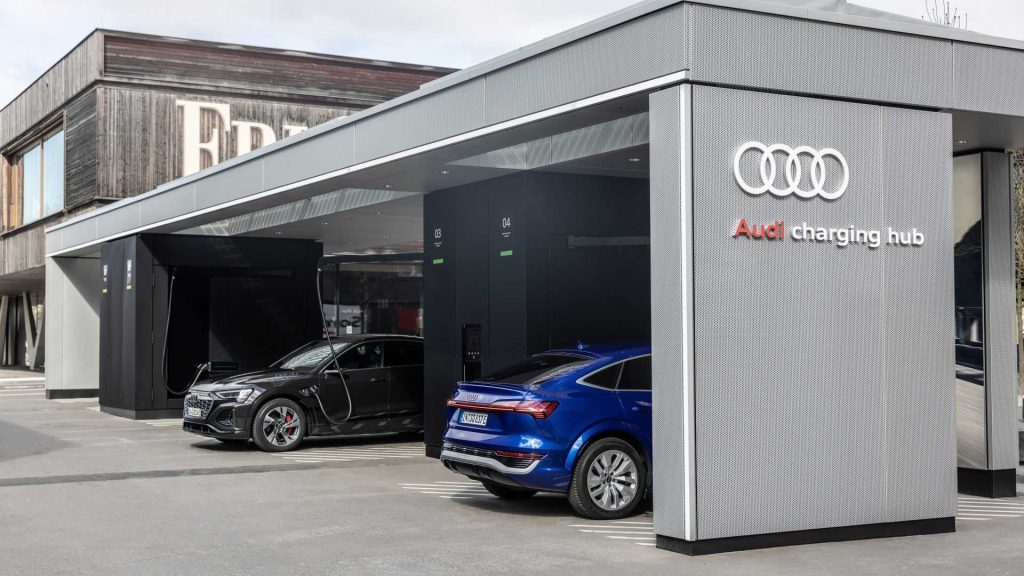Seeking to overcome the obstacle of charging infrastructure for electric vehicles, Audi closed 2022 with a big announcement: The automaker unveiled Audi Charging, its own network with a goal of installing 400,000 chargers in 27 European countries.
This new line will replace the Audi e-tron Charging Service that debuted four years ago with the launch of the brand’s first electric car. A few days ago, the company took another important leap forward with a new charging hub that features second-life batteries.
Equipped with second-life batteries, the station will only charge its stationary batteries when Frischeparadies, the restaurant in Berlin, Germany, where it is located, needs little power.
Read also: Porsche Expands Destination Charging Network in Partnership with ChargeBox
Technology Platform
The intelligent, dynamic charging control system developed by Audi ensures efficient use of the existing electrical infrastructure. To select the location based on potential demand, Audi relied on an internal data analysis.
Elias Hammer, who is responsible for the deployment and integration of the energy system of the Audi charging hub in Berlin, explained that the main difference between the new Audi charging hub and the others is that it is connected to the restaurant’s electrical installation.
Thus, by means of a dynamic and intelligent system, the battery modules will only be recharged when the restaurant’s energy demand is low.

Time Savings
The storage unit uses second-life batteries from the company’s end-of-life development vehicles, and enables the brand with the four rings to offer sustainable fast charging where the power grid would struggle to constantly operate four high-power charging points (HPC) of up to 320 kW.
While fast charging infrastructure without stationary storage often faces long waiting times due to the necessary transformers, the Audi charging hub makes optimal use of the existing infrastructure.
In addition, the modular concept makes it possible to respond on the fly to increased demand, as it would be possible to add an additional hub relatively quickly.
In the same vein, the location responds to the company’s decision to build its charging hubs where customers can make 30 to 40-minute stops in their daily routines.




